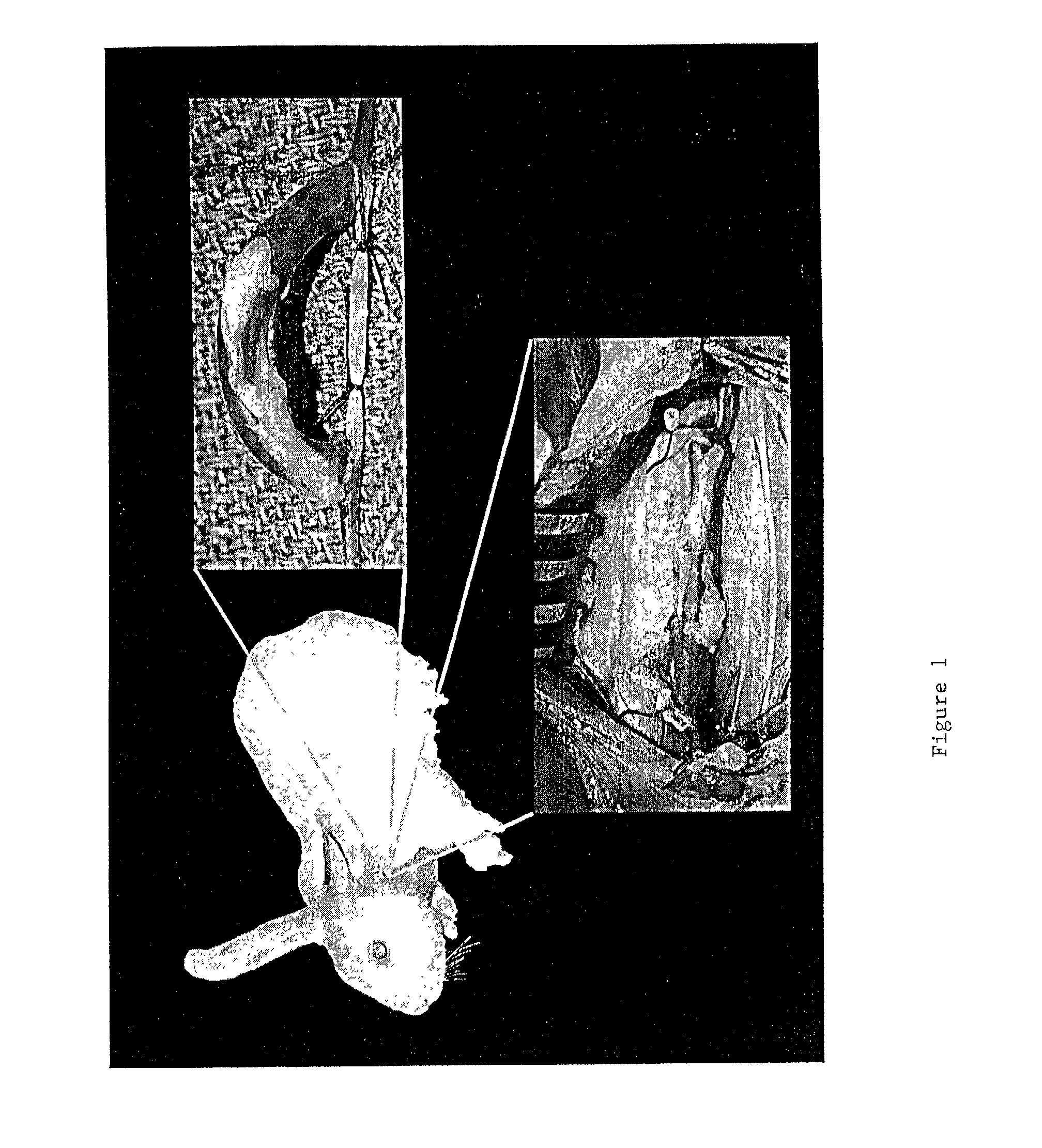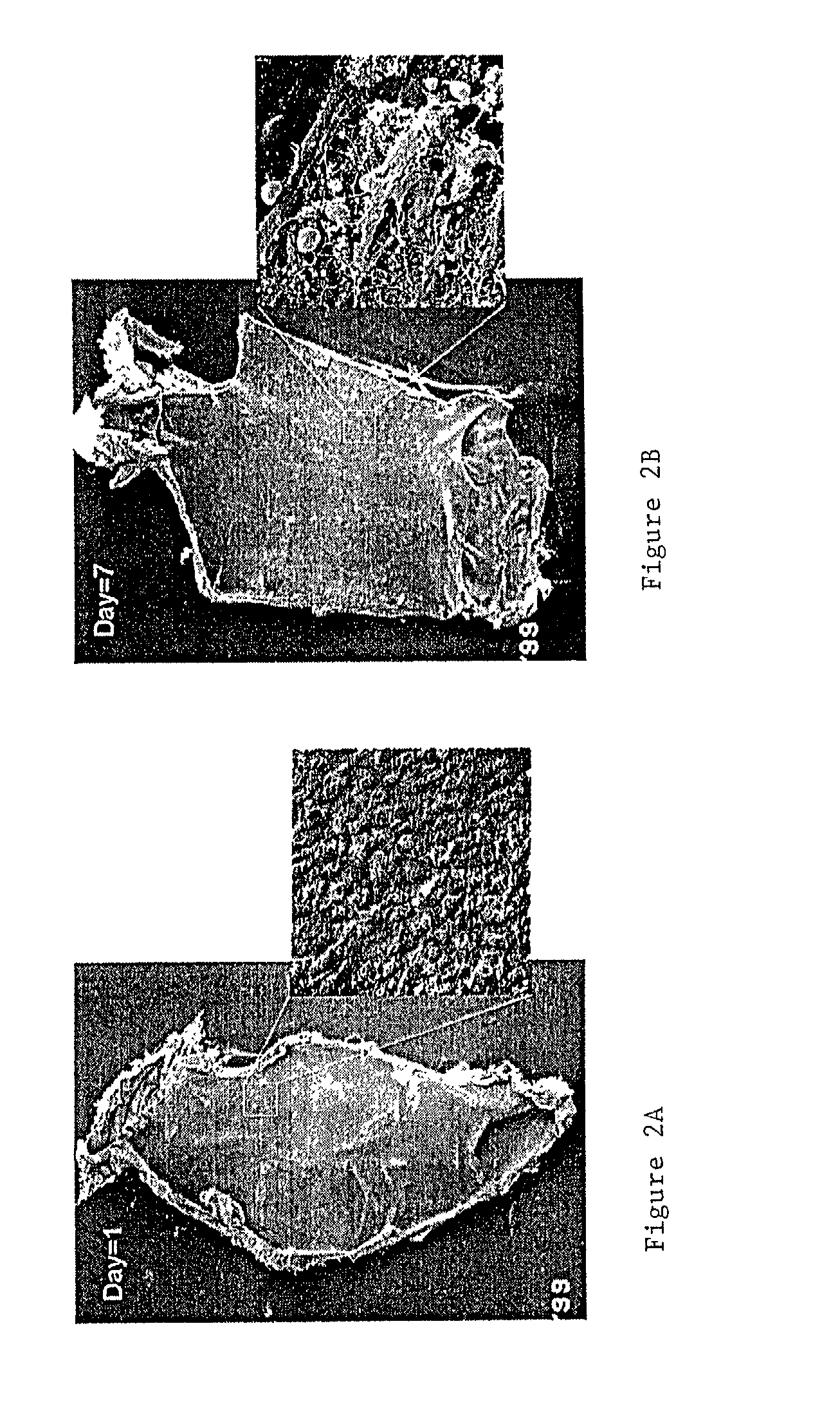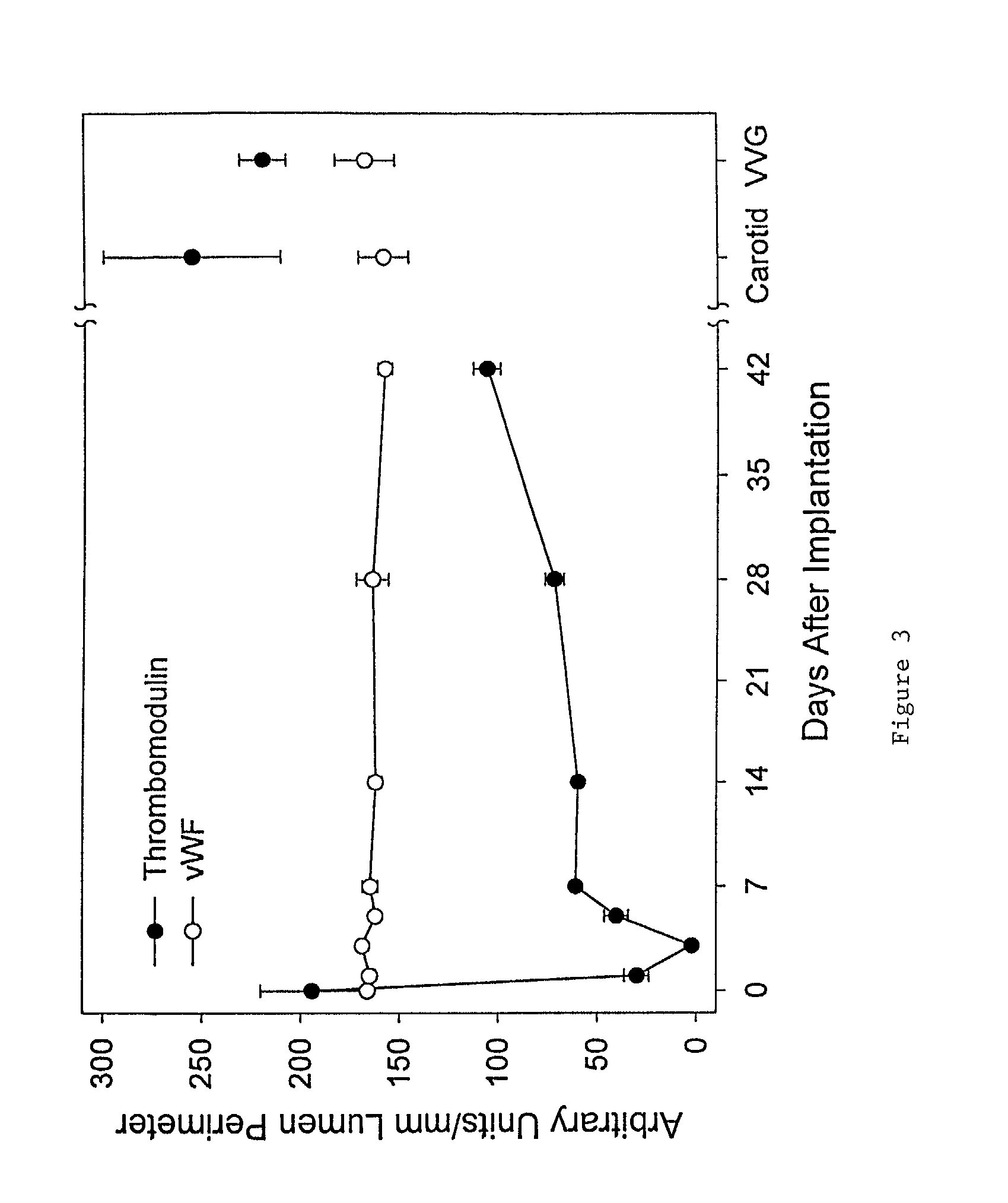Genetic engineering of vascular grafts to resist disease
a technology of vascular grafts and gene engineering, applied in the direction of viruses, vectors, peptide/protein ingredients, etc., can solve the problems of patients receiving saphenous vein grafts at risk of profound medical problems, and the failure of vascular grafts is a major medical problem,
- Summary
- Abstract
- Description
- Claims
- Application Information
AI Technical Summary
Benefits of technology
Problems solved by technology
Method used
Image
Examples
example 1
Standard Rabbit Vein Graft Model
[0124]The well-characterized rabbit vein graft model referred to previously is described in this example. The model can be used to study the pathobiology of vein graft failure and the effects of viral-mediated gene transfer on graft thromboresistance, neointimal hyperplasia and development of atherosclerosis. Further, it is representative of related human pathologies. In general, the model is made by interposing a segment of jugular vein into the ipsilateral carotid arterial circulation in an end-to-side fashion. Immediately prior to implantation, the vein graft segments can be transduced with at least one suitable viral vector according to the invention.
[0125]A. Surgical Techniques—Practice of the model involves use Pasteurella-free male New Zealand White rabbits weighing 2.5-3.5 kg. All control and experimental groups were limited to the minimum number necessary to achieve statistical significance plus 15% to account for post-operative deaths and gr...
example 2
Thrombomodulin (TM) Expression in Vein Grafts
[0132]The rabbit vein graft model was performed along lines described above in Example 1. TM expression was determined in the vein grafts using immunochistochemical analysis. FIG. 3 shows representative sections of normal rabbit jugular vein (day=0 graft) and grafts harvested 3 and 42 days after implantation and stained for TM using a specific anti-rabbit TM polyclonal antibody (American Diagnostica Inc.). TM expression was found to decrease dramatically in rabbit vein grafts shortly after implantation and to exhibit a partial recovery by day 42. To more completely quantify alterations in TM expression, rabbit vein grafts harvested at intermediate time points were stained for TM and the amount of TM expression quantified using digital threshold analysis. To control for endothelial cell loss, adjacent sections were stained for von Willibrand factor (vWF) using a polyclonal anti-human vWF antibody (Sigma) and analyzed in similar fashion (FI...
example 3
Relationship between the Capacity of Rabbit Vein Grafts to Activate Protein C and Local Thrombin Activation
[0135]Unopposed local thrombin activation is a proximate cause of early vein graft failure. In a normal blood vessel, small amounts of thrombin are continually generated. TM, present on the endothelial cell surface in large quantity, binds thrombin and converts its active site specificity from a procoagulant to an anticoagulant molecule via activation of protein C. Activated protein C (APC), along with its co-factor protein S, degrades the clotting factors Va and VIIIa thereby potently inhibiting further thrombin generation. Loss of TM expression would be expected to result in a reduced capacity of the graft endothelium to generate protein C with subsequent facilitation of local thrombin generation.
[0136]To determine the consequences of decreased TM expression on graft thromboresistance, we measured both the capacity of the graft endothelium to activate protein C and the amount...
PUM
| Property | Measurement | Unit |
|---|---|---|
| Level | aaaaa | aaaaa |
| Order | aaaaa | aaaaa |
Abstract
Description
Claims
Application Information
 Login to View More
Login to View More - R&D
- Intellectual Property
- Life Sciences
- Materials
- Tech Scout
- Unparalleled Data Quality
- Higher Quality Content
- 60% Fewer Hallucinations
Browse by: Latest US Patents, China's latest patents, Technical Efficacy Thesaurus, Application Domain, Technology Topic, Popular Technical Reports.
© 2025 PatSnap. All rights reserved.Legal|Privacy policy|Modern Slavery Act Transparency Statement|Sitemap|About US| Contact US: help@patsnap.com



